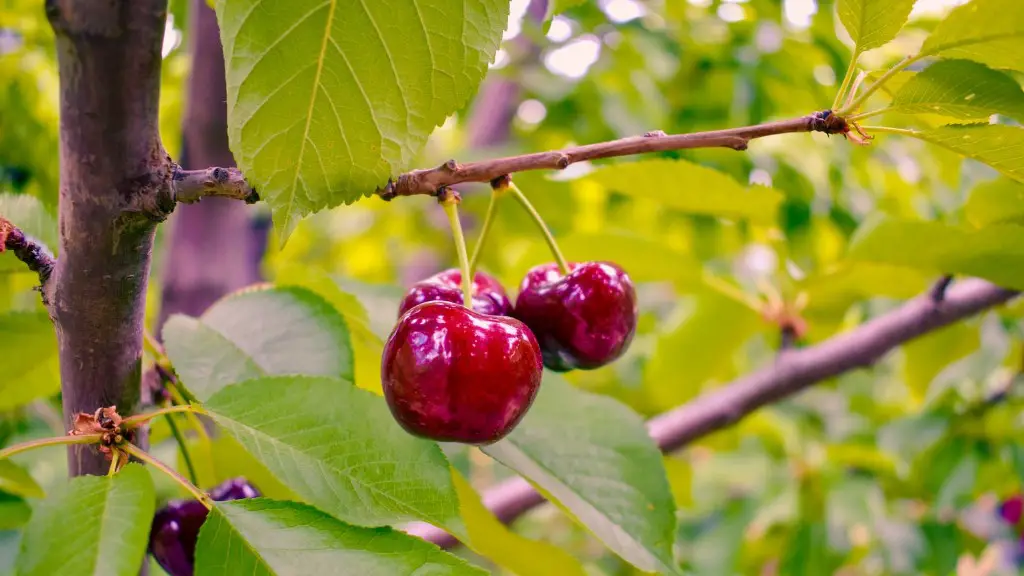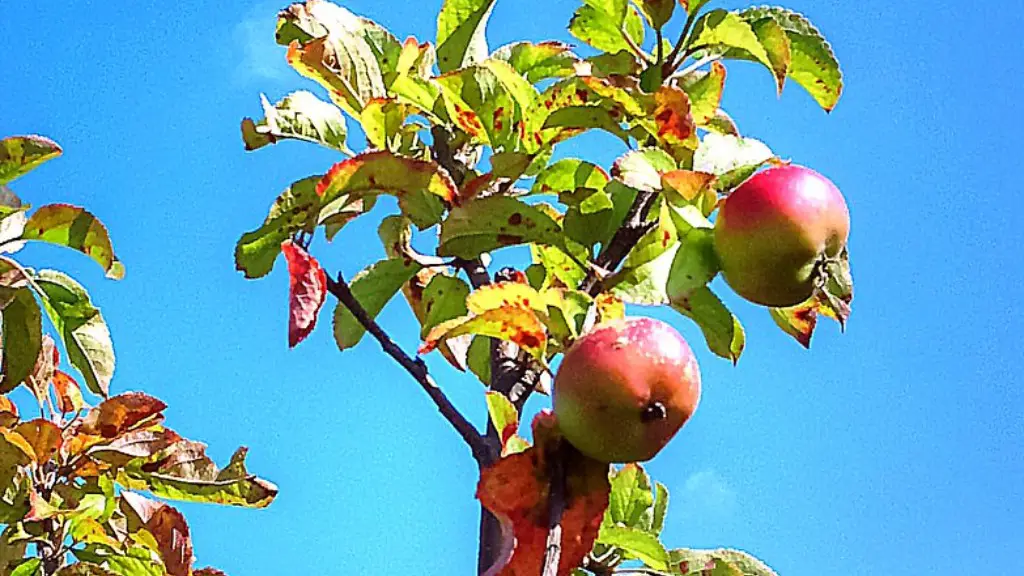A Phytochemical Physiology Lesson
The phenomenon of sap oozing from a cherry tree is more than a cosmetic concern. It is a sign of the physiological processes happening inside the tree, and understanding it can help us care for our tree better. Understanding the mechanisms and compounds involved in sap production unveils a fascinating and complex interplay between multiple elements, often accelerated by environmental extremes.
The key molecule driving sap production is called auxin. Auxins are hormones produced in the tree’s root tips and canopy needles that regulate multiple growth processes. Auxin concentration levels in any given spot in the tree’s trunk and bark will determine the degree of sap flow. Higher concentrations result in more sap emerging from induced cuts in the bark surface.
It is understood that auxin is produced in response to environmental cues. Trees may produce it when wound, when stressed for water or when affected by pollutants like smog or excessive use of fertilizers. When trees experience acute cold temperatures, auxin hormones can be induced to travel through the trunk and sapwood and be released from cuts or fissures. This increased production creates the phenomenon of sappy weeping from clearly visible bark exudations.
In addition to auxin, two other compounds play a major role in sap production: polysaccharides and proteins. Polysaccharides act as a volume-filling substance that gets pushed out of the bark with the sap, while proteins form the act as a structural base for the emergence of the sap.
From an evolutionary perspective, sap is thought to be key in provoking bark regrowth processes, as well as providing vital nutrients and stress relief to the tree. This process of producing and oozing sap from wounds increase the chances of trees making a full recovery from the damage. Sap may contain compounds that stimulate secondary shoot regrowth and create what is known as “callus growth”, which is the trees way of healing its damaged tissue.
A greater understanding of these hormones and their role in sap production may provide cherry tree growers with better insights on how best to care for their trees in changing climates. With further research, we can move towards understanding and mastering the tree’s localized environment in order to optimize the tradeoff between production and recovery rates.
Managing Your Tree
When the sap starts oozing from a cherry tree, it is a sign that the climate is becoming too extreme for the tree’s regular operations. As temperatures swing from hot to cold in a very small window of time, vegetation can become very stressed. Therefore, it is essential for gardeners and growers to take the necessary steps to alleviate this stress.
The best approach is to provide the tree with water. This helps the tree to transition between extreme temperatures without experiencing any shock. To ensure proper distribution of water, it is best to irrigate deeply, paying extra attention to the upper and lower trunk and near the root system. Irrigating too close to the trunk can provoke more sap oozing as the concentration of auxin hormones increase.
Additionally, it is a good idea to monitor the tree’s environment, providing shade when necessary and examining any aspect noticed to be of concern. When it comes to temperature, if a tree is not properly acclimatized it can recede into a state of shock, a phenomenon known as ‘transpiration arrest.’ In this state, the flow of auxin hormones through the tree’s trunk will be greatly increased, resulting in more visible sap oozing.
Furthermore, when pruning a tree, choose the right moment for it. Pruning should be carried out during the tree’s cooler seasons as, during summer, shock from the removal of foliage or branches can provoke excessive sap flow. Finally, it is essential to prevent fungal attacks and pests, as these can increase sap oozing and harm the health of the tree.
Safety Guidelines
Although there is little to no evidence on sap leakage posing any health risks, it is always a good idea to take safety precautions and use protective gloves when handling cherry trees. Sap oozing may suggest an increased susceptibility to pathogens and possibly outbreaks of fungus or bacteria, so it can be useful to take extra cautions and monitor the tree’s health closely. Furthermore, due to the amounts of sap being secreted, if the tree is especially oozing, it can start to become a slippery hazard. Therefore, it is advised to keep the immediate area around the cherry tree clean and free of incidences such as moss, dirt and leaves.
In cases where the tree is located near buildings and pathways, the collection of sap can become an aesthetic concern. However, this dripping sap should not pose any threat to the buildings, although some homeowners may want to take extra steps to protect passageways and porches from discoloration and smelling like cherry syrup.
It is important to remember that sap oozing from your cherry tree is not a cause for alarm. Rather, it is an indication of the tree’s physiology and a clue into the care and attention it requires. With the right guidance and some basic precautions, your tree should return to a healthy and productive state.
A Natural Occurrence
We often think of trees as static organisms, barely responding to changes in their environment. Cherry trees, however, are dynamic and constantly adapting to their surroundings. From season to season, trees will regulate the flow of sap and auxin hormones in order to protect, repair and create new growth. In this sense, sap oozing is a natural occurance part of the tree’s activity cycle.
This cycle is part of a larger context. Outside influences such as weather and water availability must interact with the inbuilt physiological processes of the tree in order to reach the a balance of production and regeneration. Through these interactions, trees are able to constantly regenerate and renew themselves, from the budding pink blossoms of spring to the ripening bright red cherries of summer; all of these cycles begin with the hormones found in the sap.
When sap oozes from a cherry tree, it is a sign of healthy functioning, rather than a problem. Oscillating levels of auxin hormones serve as the basis for seasonal growth and renewal. Managed properly, sap oozing can help your tree live a longer, healthier life.
The Benefits of Sap
The oozing of sap from a cherry tree is not just an indicator of the physiological processes happening in the tree. It also has many potential benefits for plants and animals alike.
Sap is primarily composed of water and several nutrients, depending on the tree species. As a result, it can provide an important source of nourishment for any wildlife frequenting our gardens, such as deer and birds, who can become particularly active in the summertime when sap starts oozing from cherry trees.
Furthermore, the sugars contained in sap can actually be beneficial for bees, who use them to feed their young. Additionally, in some parts of the world, sap is used as part of traditional medicine, while in other parts of the world, it is the basis for some unique flavors of popular beverages.
In horticulture, sap is also used as an ally against pests, as certain gums and resins when mixed with water, produce fungicidal and insecticidal solutions that aid with pest control. Sap is also commonly used in the production of organic fertilizers and plant nourishment agents, leveraging is nutrient-packed content.
Therefore, sap oozing from cherry trees is not just an indicator of our tree’s physiology. In many ways, it is also an indicator of how we can work with nature in order to improve the health of our vegetation, our wildlife and ourselves.
Preserving Nature
The way we approach nature and our environment has a huge impact on the lives of trees and other organisms. While sap oozing is a natural process for a cherry tree, several external factors like climate change and soil pollution can tilt this balance, severely damaging the health of the tree and the environment.
Therefore, it is our responsibility, as gardeners and growers to take steps to reduce the number of external factors contributing to these trees becoming overly stressed and provoking sap oozing. This includes reducing the amount of pesticides and fertilizers used, as well as taking the extra steps to reduce our carbon footprint.
In addition, it is important to take action to preserve existing trees in urban settings. Through the planting of resilient native species or the protection of existing veteran trees, we can ensure our environment remains lush and alive for future generations.
Overall, having a better understanding of the physiology of trees and the significance of sap secretion can serve as a call to action to protect our environment. Through appropriate tree management and conservation action, we can maintain healthy trees and lessen sap oozing, preserving the beauty and magnificence of nature for all to enjoy.



